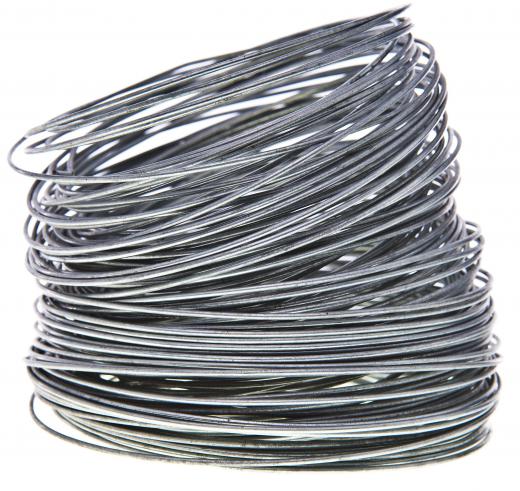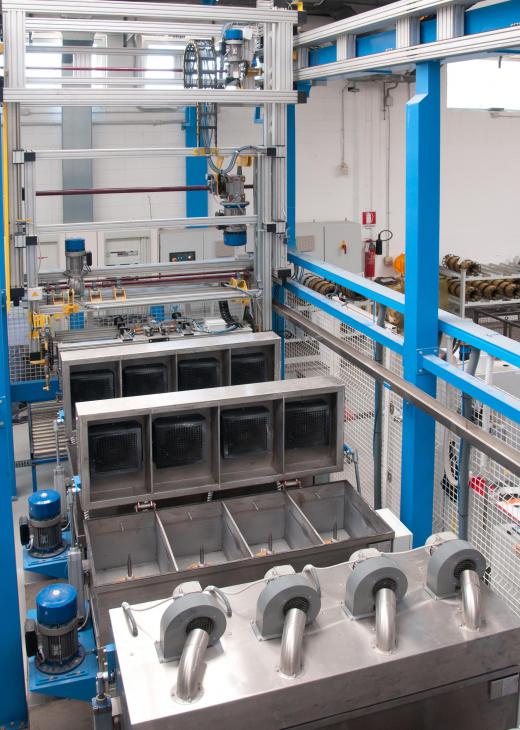What Is Tin Plating?
Tin plating is an industrial process where metal objects are coated with a thin layer of tin. This process can be applied to many types of base metals, including steel, iron, and copper. Tin plating improves the appearance of these metals for certain applications, and also helps to increase their performance and durability. After tin has been applied to a metallic base element, the resulting material is often referred to as tinplate.
Perhaps the best known application for tin plating is the coating metal cans used for storing food. Tinplate also serves as a common material for making pots, pans, and other cookware. This plating technique is used to prepare metal for use in construction, such as with metal roofing or siding. It is also applied to electronics components and other parts used in manufacturing.

Manufacturers rely on two basic techniques to create tin plated objects. The older of these two methods involves melting the tin into a molten liquid, then dipping a metal object in and allowing it to dry. In a similar process known as tin lead plating, lead is added to the tin in order to lower its melting point.
The alternative to these hot dip techniques is to coat the object using electroplating technology. During electroplating, a mix of tin salts is dissolved in a vat of water. When an electric current is run through the water, the tin irons will be attracted to a metal object placed in the vat, creating a permanent coating of tin.

Tin plating is an effective method of protecting base metals like iron or steel from rust and corrosion. While zinc plating can also be used to improve corrosion resistance, zinc is too toxic for food or medical applications, so tin plating must be used for these types of projects. Tin plating also increases the ductility of a metal object, making it easier to weld to another surface.
One potential drawback to tin plating is that it is not as effective as zinc plating, or galvanizing, when it comes to protecting materials from rust and corrosion. When galvanized metal is damaged or scratched, the zinc reacts with the air to form a new protective coating. When tin plated metal is damaged or scratched, the underlying metal is left exposed to rust and corrosion. Tin is also a relatively soft metal, making it highly susceptible to damage. This material cannot hold up under extremely cold temperatures, and should not be used in freezing conditions.
AS FEATURED ON:
AS FEATURED ON:












Discuss this Article
Post your comments